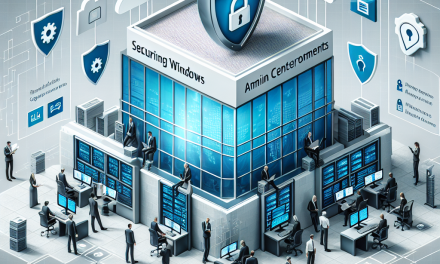Introduction
The shift to remote work has transformed how businesses operate, with many organizations adopting a hybrid work model that combines both in-office and remote environments. This change has not only reshaped workplace dynamics but also brought security concerns to the forefront. One of the essential tools in facilitating remote work is Remote Desktop Protocol (RDP), which allows employees to access Windows Server environments from remote locations. However, this convenience comes with its own set of security challenges that must be addressed diligently.
The Rise of Remote Work
The COVID-19 pandemic accelerated the adoption of remote work, prompting businesses to implement flexible working arrangements. As organizations strive to maintain productivity and ensure operational continuity, the demand for secure remote access solutions has skyrocketed. RDP, often viewed as a straightforward means to access Windows Servers from anywhere, has become a double-edged sword.
Understanding RDP and Its Vulnerabilities
RDP is a proprietary protocol developed by Microsoft that allows users to connect to remote computers securely. While it is a powerful tool for system administrators and remote employees, it is also a popular target for cybercriminals. Common vulnerabilities and threats associated with RDP include:
- Brute Force Attacks: Attackers utilize automated tools to guess usernames and passwords, seeking to gain unauthorized access.
- Exploitation of Software Vulnerabilities: Flaws in the RDP software itself can lead to unauthorized access or system compromise.
- Man-in-the-Middle Attacks: If the connection is not properly secured, attackers can intercept traffic between the user and the server.
- Ransomware: Once accessed via RDP, attackers can deploy ransomware to encrypt organizational data and demand a ransom.
Reevaluating RDP Security Measures
Given the vulnerabilities associated with RDP, organizations must take the necessary precautions to ensure secure access to their Windows Server environments. Here are several strategies to bolster RDP security within a hybrid work model:
1. Implement Strong Authentication Mechanisms
The first line of defense against unauthorized access is robust authentication. Organizations should consider multi-factor authentication (MFA) to add an extra layer of security. This ensures that even if passwords are compromised, unauthorized users cannot easily gain access.
2. Use VPNs for Remote Access
Establishing a Virtual Private Network (VPN) can create a secure tunnel for RDP connections. This approach encrypts the data transmitted between the user and the server, reducing the risk of man-in-the-middle attacks.
3. Limit RDP Access
Restrict RDP access to only those users who absolutely need it. Utilizing a role-based access control (RBAC) model allows administrators to grant access based on user roles, minimizing potential vulnerabilities.
4. Keep Software Updated
Regularly updating Windows Server and RDP software is crucial in protecting against known vulnerabilities. Implement a patch management strategy to ensure that all systems are up-to-date with the latest security fixes.
5. Monitor and Log Access
Implementing comprehensive logging and monitoring allows organizations to track RDP access attempts. Analyzing logs can help identify suspicious activity, enabling prompt action to mitigate potential threats.
6. Use Remote Desktop Gateway
Utilizing a Remote Desktop Gateway (RD Gateway) enables the establishment of secure RDP sessions by requiring authentication before access. This adds an additional layer of security, ensuring that only authenticated users can connect.
7. Leverage Network Level Authentication (NLA)
Network Level Authentication adds an extra layer of security before a remote desktop session is established. By requiring users to authenticate before establishing a connection, organizations can significantly reduce the risk associated with RDP.
Conclusion
As organizations continue to embrace hybrid work environments, the importance of securing RDP access to Windows Server cannot be overstated. By reevaluating security measures and adopting best practices, businesses can mitigate the risks associated with remote access while empowering employees to work securely from any location. The goal is to create a balance where productivity is maximized while stability and security are maintained, ensuring that remote work remains a sustainable and secure option for the future.
About WafaTech
WafaTech is dedicated to providing insights and solutions for modern digital challenges. As the landscape of remote work continues to evolve, we strive to keep our readers informed about the latest trends and best practices in technology, security, and business operations. Stay tuned to our blogs for more insights on navigating the future of work.





